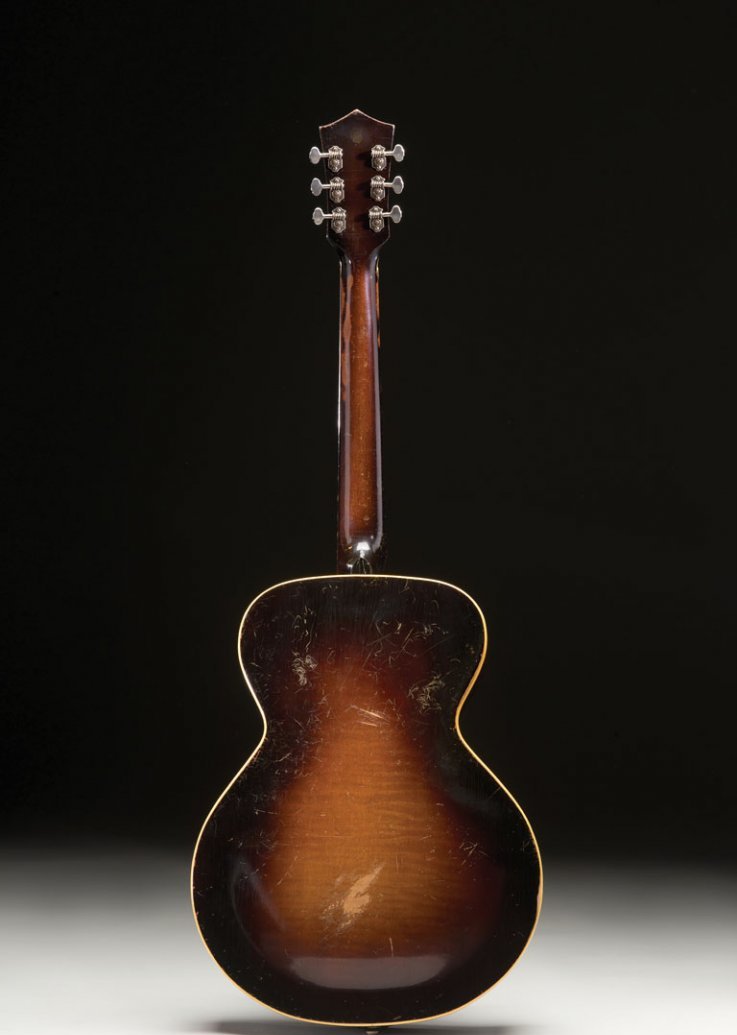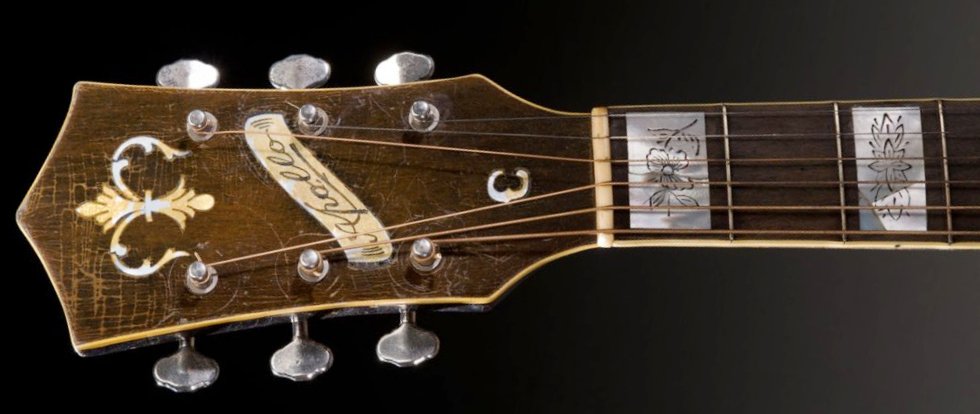NOTE: Although these guitars are not actual pieces of the museum, they have a place on this site in order to provide the visitor with a complete picture of all the Epiphone made acoustic archtop models from 1931 until 1957.
“The Apollo guitar was introduced in 1937, and it is believed to have been marketed solely in Great Britain. It was a model aimed at the novice player and held the distinction of being the lowest-priced Epiphone guitar available in the U.K.” (F & F, page 105) see picture
F&F’s source on this Ken Achard (misspelled as “Archard”) refered to the instrument as the Epiphone 8“ Model, wrote: “An inexpesive “Epiphone 8” Model was produced with a sycamore body and graduated spruce top, to cater for the student or amateur player. The non-adjustable, but steel reinforced neck fitted with a block inlaid fingerboard, and a standard trapieze tailpiece used. The “Model 8” competed at this time with the Gibson Kalamazoo range.” (Achard, page 16) see picture
Apollo model specifications : Wiedler
Guernsey’s auctioneers wrote Feburary 2014:
“One of the most mysterious items in this auction, the exact story behind this guitar’s origins is unknown. Its body measures 15 ½ inches across the lower bout, 11 ¼ inches across the upper bout, and has a similar shape to certain models Regal built during the ’30s as well as Epiphone’s Royal and Blackstone models. Also like certain 1930s Regal and Epiphone guitars, this example features three-segment f-holes, although its design is much simpler than those either company used.
The block inlays feature engraved floral patterns similar to those found on Epiphone banjos and Recording model guitars, but the 17th fret inlay is uncharacteristic of Epiphone, which usually had inlays as high as the 15th fret. The headstock banner inlay featuring the Apollo name is also similar to Epiphone Recording and Masterbilt guitars. Perhaps the most telling clue is the “C” or possibly “E” below the banner, which looks like a crude version of the “E” logo Epiphone later adopted. This, along with the fact that Epiphone offered an Apollo export model in the late ’30s, leans towards this being an experimental or prototypical Epiphone guitar.”
Wiedler wrote us August 2014:
“The Guernsey description is very speculative. From the pictures I don’t see any convincing evidence that this instrument was built by the Epiphone company. The Epiphone Apollo models marketed in Britain looked different and were most probably not manufactured by Epiphone in NYC. “
Photos: courtesy Guernsey Auctions and photographer Paul Schraub



